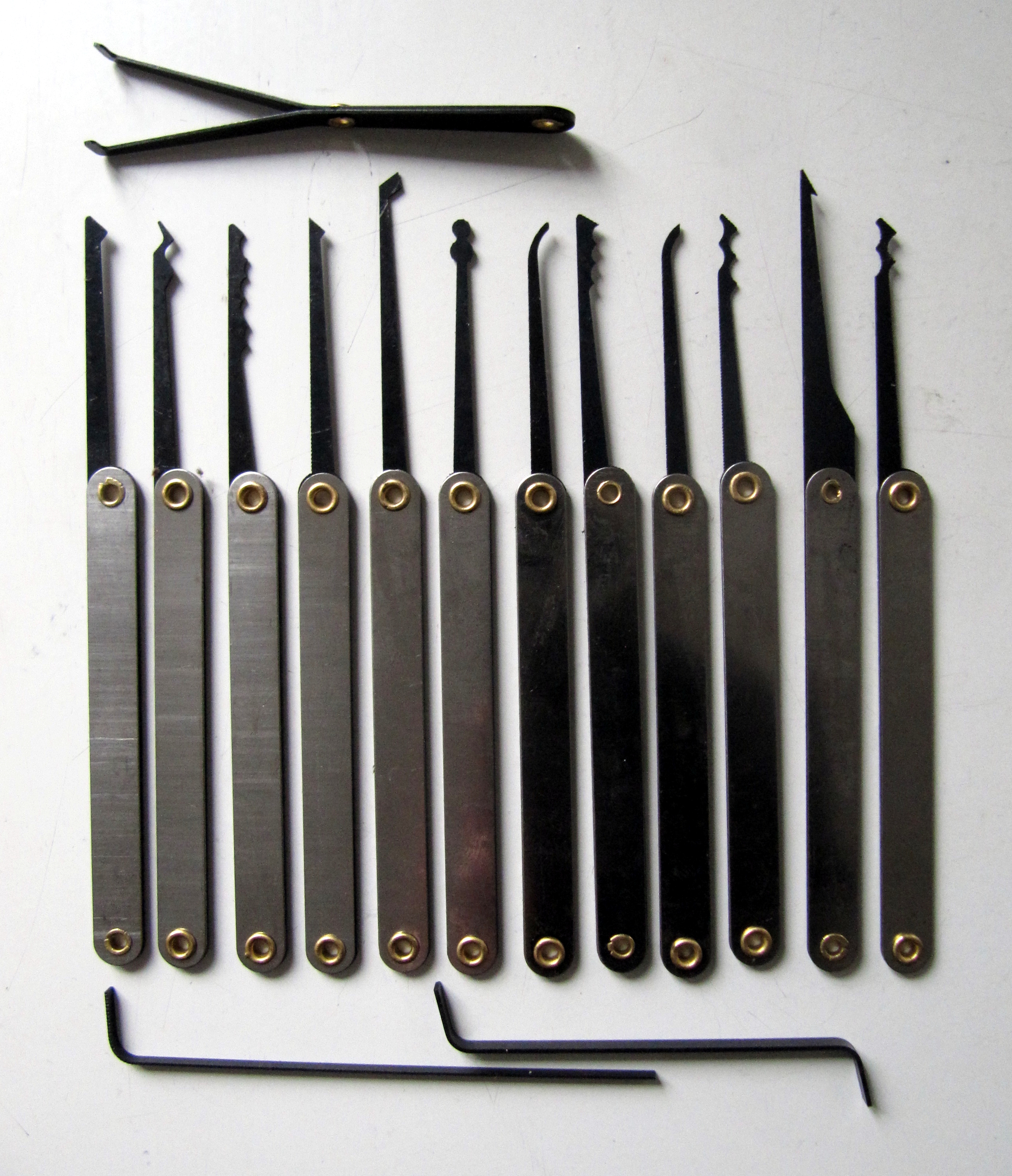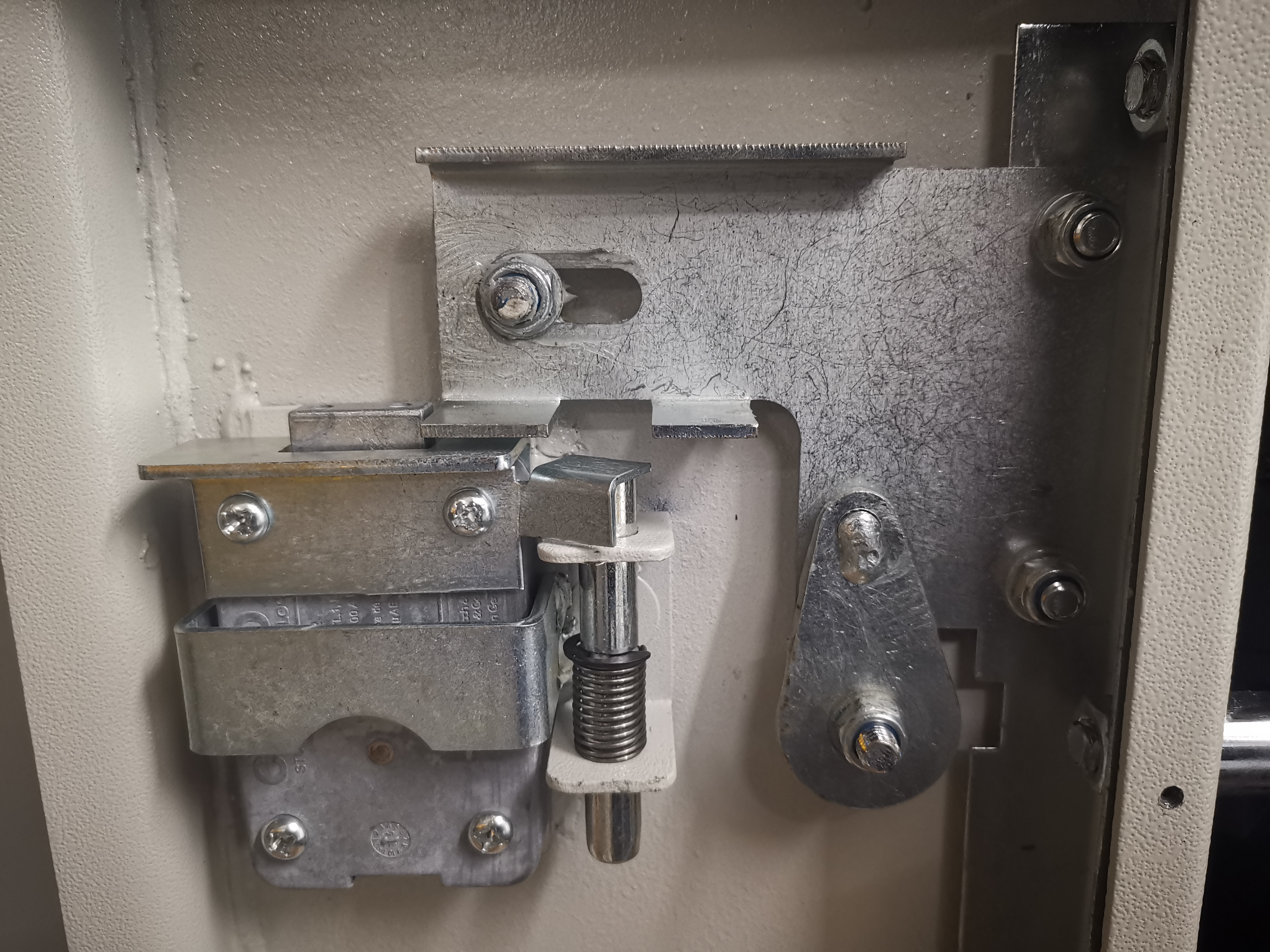|
Lock Picking
Lock picking is the practice of unlocking a lock by manipulating the components of the lock device without the original key. Although lock-picking can be associated with criminal intent, it is an essential skill for the legitimate profession of locksmithing, and is also pursued by law-abiding citizens as a useful skill to learn, or simply as a hobby ( locksport). In some countries, such as Japan, lock-picking tools are illegal for most people to possess, but in many others, they are available and legal to own as long as there is no intent to use them for criminal purposes. History Locks by definition secure or fasten something with the intention that access is possible only with the matching key. Despite this, criminal lock picking likely started with the first locks. Famed locksmith Alfred Charles Hobbs said in the mid-1800s: Professional and recreational lock picking also has a long history. King Louis XVI of France (1754–1793) was a keen designer, picker, and m ... [...More Info...] [...Related Items...] OR: [Wikipedia] [Google] [Baidu] |
Shear Line (locksmithing)
This is a glossary of locksmithing terms. Glossary References External links {{Locksmithing Locksmithing Locksmithing is the science and art of making and defeating locks. Locksmithing is a traditional trade and in many countries requires completion of an apprenticeship. The level of formal education legally required varies from country to country ... Locksmithing ... [...More Info...] [...Related Items...] OR: [Wikipedia] [Google] [Baidu] |
Tubular Pin Tumbler Lock
A tubular pin tumbler lock, also known as a circle pin tumbler lock, radial lock, or the trademark Ace lock popularized by manufacturer Chicago Lock Company since 1933, is a variety of pin tumbler lock in which a number of pins are arranged in a circular pattern, and the corresponding key is tubular or cylindrical in shape. Most locks use between six and eight pins, although some use as few as four or as many as ten. The devices have been widely used on vending machines, elevators, public computers, and bicycle locks. Design The design of a tubular lock is similar to the pin tumbler lock, in that there are several ''stacks'' of pins. The key is a cylinder shape with notches cut around the outer or (rarely) inner edge. Each of these notches depresses a single pin inside the lock to a specific height allowing the ''lock cylinder'' to turn freely. Uses Tubular locks are commonly seen on bicycle locks (such as the Kryptonite lock), Kensington computer locks, elevators, and ... [...More Info...] [...Related Items...] OR: [Wikipedia] [Google] [Baidu] |
Lock Bumping
Lock bumping is a lock picking technique for opening a pin tumbler lock using a specially crafted bump key, rapping key or 999 key. A bump key must correspond to the target lock in order to function correctly. History A US patent first appears in 1928 by H. R. Simpson called a rapping key.''High Security Mechanical Locks - An Encyclopaedic Reference'' published by Graham W. Pulford 2007, p. 19 In the 1970s, locksmiths in Denmark shared a technique for knocking on a lock cylinder while applying slight pressure to the back of the lock plug. When the pins would jump the inside of the cylinder, the plug would be able to slide out freely, thus enabling the locksmith to disassemble the lock quickly. The use of a bump key was not introduced until some time later and was first recognized as a potential security problem around 2002–2003 by Klaus Noch, who brought it to the attention of the German media. After further examination of the procedure, a white paper was drafted in 2005 by ... [...More Info...] [...Related Items...] OR: [Wikipedia] [Google] [Baidu] |
Snap Gun
A snap gun, also known as lock pick gun, pick gun, or electric lock pick, is a tool that can be used to open a mechanical pin tumbler lock (a common type of cylinder lock) without using the key. A steel rod is inserted into the lock and the snap gun briefly fires the rod against all of the lock pins simultaneously, momentarily freeing the cylinder and enabling it to be turned using a tension wrench. The snap gun is an alternative to a conventional lockpick, which requires other techniques such as raking to free the pins. History Louis S. Hanflig patented the first snap gun in the United States in 1934. Subsequent designs were patented by Segal Samuel in 1943 and William J. Miskill in 1951. The earliest snap guns were developed to assist police officers in opening locks without the additional training required for traditional lockpicking techniques. Although lock picking is often associated with crime, snap guns are not commonly used by criminals because concealment is difficult a ... [...More Info...] [...Related Items...] OR: [Wikipedia] [Google] [Baidu] |
Master Lock
Master Lock is an American company that develops padlocks, combination locks, safes, and related security products. Now a subsidiary of Fortune Brands Home & Security, Master Lock Company LLC was formed in 1921 by locksmith-inventor Harry E. Soref and is headquartered in Oak Creek, Wisconsin.Schmid, JohnMaster Lock reassessing China: Milwaukee-based company finds it can compete better from U.S. soil ''Milwaukee Journal Sentinel'', January 1, 2011. In 1970 the company was purchased by American Brands from Soref's heirs. American Brands was later renamed to Fortune Brands, which then split on October 3, 2011, to create the Fortune Brands Home & Security company and the beverages company Beam Inc. (which was then soon purchased by Suntory). History 20th century Before co-founding the company in 1921, Harry Soref had been a traveling locksmith in the U.S., Canada, and Mexico, [...More Info...] [...Related Items...] OR: [Wikipedia] [Google] [Baidu] |
Lock Bumping
Lock bumping is a lock picking technique for opening a pin tumbler lock using a specially crafted bump key, rapping key or 999 key. A bump key must correspond to the target lock in order to function correctly. History A US patent first appears in 1928 by H. R. Simpson called a rapping key.''High Security Mechanical Locks - An Encyclopaedic Reference'' published by Graham W. Pulford 2007, p. 19 In the 1970s, locksmiths in Denmark shared a technique for knocking on a lock cylinder while applying slight pressure to the back of the lock plug. When the pins would jump the inside of the cylinder, the plug would be able to slide out freely, thus enabling the locksmith to disassemble the lock quickly. The use of a bump key was not introduced until some time later and was first recognized as a potential security problem around 2002–2003 by Klaus Noch, who brought it to the attention of the German media. After further examination of the procedure, a white paper was drafted in 2005 by ... [...More Info...] [...Related Items...] OR: [Wikipedia] [Google] [Baidu] |
Newton's Cradle
The Newton's cradle is a device that demonstrates the conservation of momentum and the conservation of energy with swinging spheres. When one sphere at the end is lifted and released, it strikes the stationary spheres, transmitting a force through the stationary spheres that pushes the last sphere upward. The last sphere swings back and strikes the nearly stationary spheres, repeating the effect in the opposite direction. The device is named after 17th-century English scientist Sir Isaac Newton and designed by French scientist Edme Mariotte. It is also known as Newton's pendulum, Newton's balls, Newton's rocker or executive ball clicker (since the device makes a click each time the balls collide, which they do repeatedly in a steady rhythm). Operation When one of the end balls ("the first") is pulled sideways, the attached string makes it follow an upward arc. When it is let go, it strikes the second ball and comes to nearly a dead stop. The ball on the opposite side acquires ... [...More Info...] [...Related Items...] OR: [Wikipedia] [Google] [Baidu] |
Bumping Key
Lock bumping is a lock picking technique for opening a pin tumbler lock using a specially crafted bump key, rapping key or 999 key. A bump key must correspond to the target lock in order to function correctly. History A US patent first appears in 1928 by H. R. Simpson called a rapping key.''High Security Mechanical Locks - An Encyclopaedic Reference'' published by Graham W. Pulford 2007, p. 19 In the 1970s, locksmiths in Denmark shared a technique for knocking on a lock cylinder while applying slight pressure to the back of the lock plug. When the pins would jump the inside of the cylinder, the plug would be able to slide out freely, thus enabling the locksmith to disassemble the lock quickly. The use of a bump key was not introduced until some time later and was first recognized as a potential security problem around 2002–2003 by Klaus Noch, who brought it to the attention of the German media. After further examination of the procedure, a white paper was drafted in 2005 by ... [...More Info...] [...Related Items...] OR: [Wikipedia] [Google] [Baidu] |
Rake Lock Picks
Rake may refer to: * Rake (stock character), a man habituated to immoral conduct * Rake (theatre), the artificial slope of a theatre stage Science and technology * Rake receiver, a radio receiver * Rake (geology), the angle between a feature on a bedding plane and the strike line in geology Tools * Rake (tool), a horticultural implement, a long-handled tool with tines * Fire rake, a heavy-duty variant of the “normal” rake, used for fire prevention * Rake or hay rake, a farm implement * Rake angle, a parameter in machining and cutting geometry * Mash rake, a tool used in brewing Transport * Rake, the caster angle of a bicycle or motorcycle * Rake, the difference between the front and rear ride heights of a car * Rake (train), a line of coupled passenger coaches, or freight wagons, or railcars (excluding the locomotive) that typically move together Mathematics and computing * Rake (angle), mathematical definition * Rake (cellular automaton), a cellular automaton pattern that m ... [...More Info...] [...Related Items...] OR: [Wikipedia] [Google] [Baidu] |




